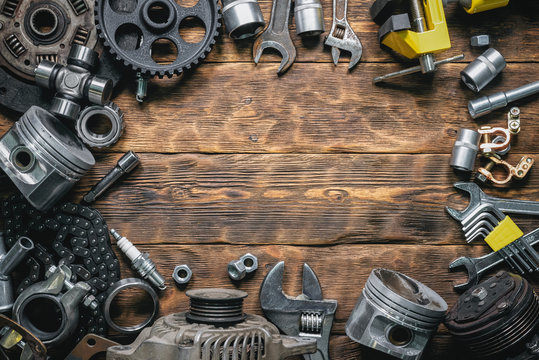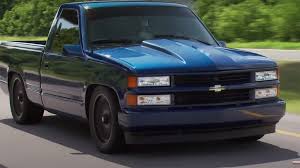
There is something oddly compelling about the look of a salvage yard. Car rows and rows that have lived rough, dirty lives now sit stationary, their travels stopped—but not finished. To most motorists, salvage yards may resemble automobile graveyards. To intelligent car owners and frugal repairmen, though, used auto parts salvage yards are treasure troves waiting to be discovered.
Purchasing brand-new car parts has become a pricey affair, particularly when it involves high-end or foreign cars. For most, this price tag is a financial burden, either delaying repair work or abandoning a vehicle altogether. That’s where these salvage yards are helpful—locales where cars originally headed for the grinder are repurposed and where car owners can save significant cash while extending the life of older cars.
The True Story About Salvage Yards
Most folks envision salvage yards as messy dumps with rusting automobiles piled in a disorganized mess. The reality is much more systematized. Contemporary salvage yards are highly organized operations that list vehicles upon arrival, sometimes even documenting their state, mileage, and what individual parts they still contain.
When automobiles arrive at these places, it is typically for one of several reasons:
- They’ve been involved in an accident and are totaled by insurance companies.
- They’re high-mileage or old cars that are more expensive to repair than they’re worth on the books.
- They’ve simply gone through their road life, but still have several components that are still operational.
Rather than being demolished in the first place, these vehicles are dismantled carefully. Useable components are pulled by technicians, inspected for functionality, cleaned up, and then warehoused in climate-controlled inventory spaces. They are labeled and indexed so customers can quickly locate what they are looking for.
And what becomes of the leftover metal shells? They’re resold to recyclers, so nothing much is wasted. It’s a closed-loop process that prevents tons of material from ending up in landfills.
Why Salvage Yard Parts Are Worth Considering
It’s not only about saving money, although the cost savings can be impressive. Salvage yard components typically have a certain quality and authenticity that aftermarket components simply can’t replicate. Aftermarket parts are brand new, but they’re manufactured by a third party, and they don’t necessarily fit your original specifications perfectly.
Reused OEM (original equipment manufacturer) parts purchased from salvage yards, however, are removed directly from the identical make and model of vehicle you drive. They were made for that vehicle. Therefore, when you get a used alternator, transmission, or bumper from a yard, you have an idea that it fits and works just as the maker planned.
A few other benefits you should consider:
- Ready availability: In contrast to ordering new parts that can be backordered, it’s possible for a lot of salvage yards to come in and leave with what you require the same day.
- Environmentally friendly effect: Reusing parts that already exist decreases the need for new manufacturing, thereby reducing industrial emissions, energy consumption, and raw material extraction.
- Cost control for big repairs: If something major breaks—such as an engine or transmission—the cost of a brand new replacement can outweigh the car’s value. Salvage yards provide the means to keep a car on the road without shelling out thousands.
The Special Case of Used BMW Parts
Luxury cars have their own set of problems. A replacement part for a brand-new luxury model may be three or four times as expensive as a similar part for an economy vehicle. This is particularly so for brands such as BMW, where parts tend to be imported and charged premium prices.
This is where buying used BMW parts from salvage yards can be a lifesaver. Salvage yards accept BMW cars that were damaged in accidents but still have working engines, transmissions, interior parts, or electronics. Even if a vehicle is too far gone to be repaired structurally, its individual components can have several decades of life left.
Purchasing used parts such as control arms, turbochargers, instrument clusters, or navigation systems from recovered BMWs can save up to hundreds or even thousands of dollars. And because they are original OEM parts, they fit a glove and maintain the car’s performance level.
For auto owners who wish to maintain the originality and driving quality of their BMW without breaking the bank, junkyards provide a great point between expensive dealership parts and often unreliable aftermarket components.
What You Can Expect When Visiting a Salvage Yard
For most, the thought of walking into a salvage yard is daunting. But once you know the way things work, the experience becomes much less enigmatic—and even fun. A little knowledge can go a long way in getting the most out of your visit and preventing frustration.
Here’s an overview of what a typical experience will be like:
- Organized Layouts
Most modern salvage yards are arranged by vehicle type or brand. Instead of wandering through endless rows, you’ll often find clear sections for sedans, SUVs, trucks, and sometimes even dedicated zones for European or luxury cars—making it easier to track down hard-to-find components like used BMW parts.
- Parts Lookup Assistance:
Most yards do have front-desk personnel who can scan inventory files and inform you where a part is. Some even offer to give you a printed map of the yard or take you to the correct row, saving you time and hassle.
- Pull-Your-Own vs. Pre-Pulled
Depending on the yard, you may pull out the part yourself (bring gloves and tools) or order a pre-pulled part that’s already cleaned, tested, and ready for you to drive home. Both routes have their advantages—DIY pulling is less expensive, while pre-pulling saves you time.
- Pricing That Surprises You:
Expect dramatically lower prices than you’d find at a dealership or retail store. Engines, transmissions, and body panels can be found for a fraction of what you’d pay originally, which comes in handy for big repairs.
- Easy Purchase Process:
Once you find your part, you’ll come to the office to pay for it. Short-term warranties or return policies on some parts are common at many salvage yards, so you feel good about your purchase.
Going to a salvage yard isn’t about fumbling through mountains of trash—it’s about making value out of other people’s trash. When you understand how it works, it isn’t so much of a pain and more of a treasure hunt for car gold.
The Economic Ripple Effect of Salvage Yards
Another too-often-neglected advantage of salvage yards is their economic contribution to local communities. With each vehicle that flows into a salvage yard comes numerous small business opportunities and support to multiple industries:
- Local Employment: Salvage yards create stable jobs in their communities for dismantlers and inventory clerks, parts specialists, and delivery drivers.
- Repair Shops: The availability of affordable parts allows independent mechanics to give customers a better price, making their shops competitive with big dealerships.
- Metal Recycling Industry: The shell of the completely stripped vehicle is then sent to scrap metal firms, providing raw materials to flow back into production, while it provides support to recycling-sector employment.
Even for those who never visit a salvage yard, the existence of these operations decreases the cost of parts across the board by introducing competition into the supply chain. In this manner, salvage yards don’t merely assist individual motorists with savings—they assist in keeping the overall repair system affordable and viable.
Conclusion
Cars aren’t mere machines—cars are investments, memories, and sometimes even lifelong friends. When something does go wrong, the urge may be to fix it with something shiny and new. But oftentimes the wiser decision is to seek value in the parts that already surround us.
Used auto parts salvage yards make this possible. They breathe new life into cars that would otherwise be forgotten, and they offer everyday drivers an affordable way to stay on the road. Whether you’re repairing a family sedan or hunting for rare used BMW parts, these yards provide access, savings, and sustainability all at once.
So the next time a costly repair seems set to blow your budget, think about paying a visit to a nearby salvage yard. You may not only find the part you’re looking for—you may uncover an entire new philosophy of car ownership, one that’s cheaper, greener, and better by far.
